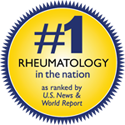As osteoarthritis (OA) of the knee progresses in severity, the pain can become refractive to medical therapies such as acetaminophen and nonsteroidal anti-inflammatory medications, and intra-articular injections of corticosteroids and hyaluronate. Surgical lavage and/or debridement by arthroscopy is sometimes recommended to patients at this point. Prior studies touting the benefits of arthroscopic surgery for knee OA have almost all been uncontrolled. Thus the benefits of the procedure have never been clearly proven. Moseley et al (New Engl J Med 347:81-88, 2002) investigated this question in a recent publication.
Methods:
180 patients with OA of the knee were randomly assigned to receive one of three treatments: 1) arthroscopic debridement, 2) arthroscopic lavage, or 3) placebo treatment. All surgeries were performed by the same surgeon according to currently accepted practices for debridement and lavage. Placebo treatment consisted of a sham surgery in which incisions were made but no instruments entered the knee joint. Post-operative care was identical in all three groups and provided by nurses blinded to the treatment assignment. Patients were also blinded to the treatment, as were the outcome assessors. Outcomes were assessed at multiple time points over 24 months and consisted of 3 self-report scores for pain and 2 self-report scores for function.
Results:
A total of 165 patients completed the 2-year study. Since this study was performed at a Veterans Hospital, 93% of participants were male. Sixty percent of participants were white and approximately 30% were black. Neither of the groups receiving arthroscopic intervention reported less pain or better function than the placebo group. For example, mean pain scores on the Knee-Specific Pain Scale were similar at one year in the placebo, lavage and debridement groups: 48.9 + 21.9, 54.8 + 19.8, and 51.7 + 22.4, respectively (p values NS). Similarly, scores for self-reported ability to walk and bend at one year were not significantly different in the placebo, lavage and debridement groups: 49.4 + 25.5, 49.6 + 29.1, and 56.4 + 28.4, respectively (p values NS). In fact, objectively measured walking and stair climbing were poorer in the debridement group than in the placebo group at two weeks, one year and there was a similar, but not statistically significant, trend at two years.
Conclusion:
This study provides strong evidence that arthroscopic lavage with or without debridement is not better than a placebo procedure for improving knee pain or self-reported function. In fact, at some points in follow-up, objectively measured function was significantly worse in the debridement group than in the placebo group.
Editorial Comment:
Approximately 650,000 arthroscopic procedures for knee OA are performed yearly in the U.S. at a total cost of approximately $3.25 billion. This important study clearly calls into question the legitimacy of this expensive invasive procedure since no benefit can be demonstrated above and beyond that of sham surgery. One of the weaknesses is that nearly all of the participants were men (because it was done at a VA hospital), while the majority of knee OA patients are women. Another weakness is that as many as 44% of patients approached for participation in this study declined, and this may have introduced bias. Overall, however, this is a very well designed study with excellent retention of participants over two years. The blinding of patients, care-givers and outcome assessors, and the utilization of one surgeon for all procedures, are important positive features of this study.

